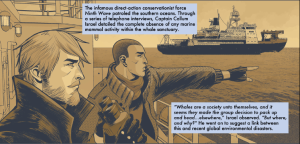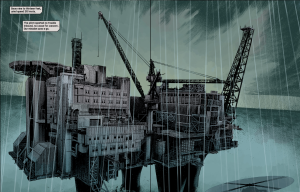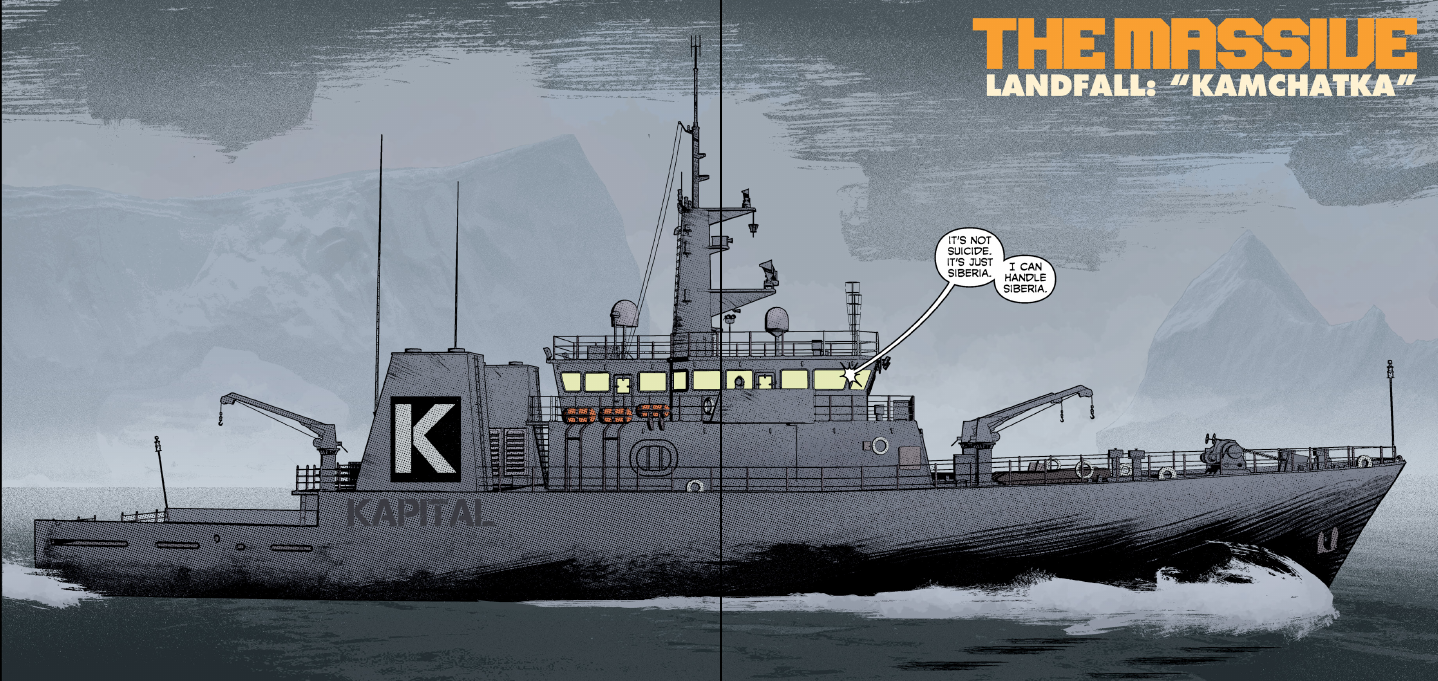The best thing about the Humble Bundle and other similar deals is that you may go after the bundle for one book that interests you and end up with lots of other stories you never would have considered otherwise. It’s why the publishers are so keen to allow their comics to be available when someone paying them the minimum would be giving them just a few dollars per story, if that. It’s one of the oldest sales tactics – a free taste. The Massive was one such story for me. And I’m glad I was able to read it. While the entire series has already been published, this post is only going to consider the first volume. The main reason for that is that I do not buy DRM comics and while Humble Bundle comics are available DRM-free, the rest of the series is not.

While the story may indeed be deemed a classic in due time, it is certainly a product of the time in which it was written. The story is about the crew of The Kapital after a year of environmental disasters in which every possible environmental disaster happens on the largest scale possible. Additionally, the main character and captain of the ship, Callum, is an ex-mercenary. Although it seems forgotten at this point, there was a huge controversion a decade ago at the use of mercenaries in the Iraq War to mask the need for more troops and to potentially obviate some rules governing troop conduct.
In contrast to other stories about post-apocalyptic worlds, the first volume of The Massive is less about the deterioration of society and more about how Callum deals with what this new world means for the mission he and his acolytes have committed themselves to: protecting the environment. While the need to protect the world might be more evident following the chain of disasters leading up to the opening of this volume, a humanity in dire straits is a more selfish humanity. If they are starving, they aren’t going to refrain from eating endangered species. Callum’s mercenary past led him to insist the crew remain non-violent, but the world is less tolerant of being told they can’t do something.

The main thrust of the narrative at this point appears to be idealism vs realism. Callum’s first brush with idealism is when he’s hired to evacuate the environmental protesters from an oil rig. He sees both the determination of the protestors and the raw power of the Earth. After he sees that wars are not as clean as they’re depicted – being paid to blow up a hospital or having another mercenary kill the person they were to keep safe because he was offered more money – he decides to go for the idealism route. He takes over an environmental group and they take strong, non-violent action against environmental villains. As he deals with the more desperate humans (as I mentioned above), his idealism is put to the test. Eventually, he ends up getting defensive weapons because in the current world, he will not be martyred if he dies for his cause. Even more attacks come up against his idealism as he’s forced to buy munitions if he wants food and water from his supplier in Mogadishu. It was most likely his strong leadership and idealism that facilitated his takeover of the environmental group. It remains to be seen if his idealism will lead him to lose the group.
As usual, science fiction gets us to think by providing us with extreme situations. Sure, it’s easy to stick to idealism when the world is an ideal situation. Things can still go wrong, as they do for the protestors on the oil rig, but it’s a whole other issue to remain idealistic when things go awry. Unlike The Walking Dead, the threat isn’t some continuous, physical enemy. Once the year of environmental disasters is over, it’s just existential threats like hunger and thirst or other humans to worry about. Sometimes that’s even worse. It’s easy to imagine humans going crazy when they’re constantly hunted. Its’ darker to realize it could happen even after the threat is gone.
Questions? Comments? I enjoy conversation. Feel free to comment on Comic POW! Or Goodreads!
The Massive written by Brian Wood with art by Kristian Donaldson and Garry Brown. Colors by Dave Stewart. Lettering by Jared Fletcher.
